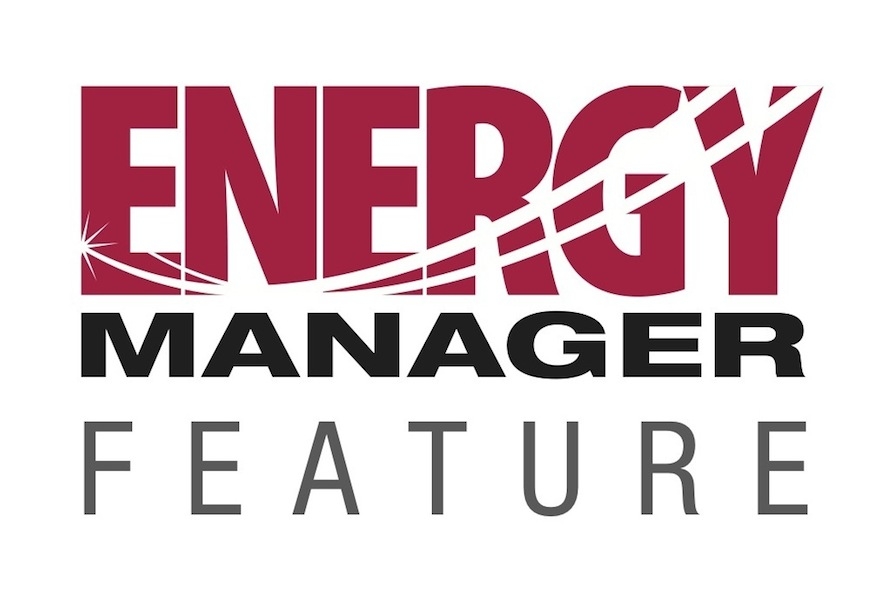
News
FEATURE – Curbing Skylight Energy Loss
October 9, 2012 - Skylights represent an integral part of a commercial building’s envelope, but for several years, AAMA and code bodies have held divergent opinions on their value for daylighting to save energy by supplanting artificial lighting, with the debate focusing on the maximum permitted roof coverage area. Recently, the two sides have come closer together as daylighting has gained green credentials and evidence has mounted that the savings are real. In fact, one code now requires a minimum roof coverage area of 3% for commercial buildings greater than 5,000 square feet (ft2) in overall area.
October 9, 2012 By Ken Laremore Carlisle SynTec Systems

As a result, skylights have recently received greater attention in terms of balancing thermal performance with the mission of daylighting.
Code-mandated U-factor requirements have tightened right along with those for windows and doors. The 2012 International Energy Conservation Code (IECC), for example, has set maximum permitted U-factors for skylights at 0.75 for the southernmost Climate Zone 1, 0.65 in Zone 2 and 0.55 elsewhere. Solar heat gain coefficients (SHGC) are limited to 0.30 in southern zones, but are not limited in northern zones where solar gain provides beneficial supplementary heating. Both the International Residential Code (IRC) and International Building Code (IBC) now reference the IECC as a single nationwide uniform energy code, rather than each having energy requirements of their own. Energy Star Version 6.0, now under development for fall 2013 implementation, proposes to reduce these minima by roughly an additional 10%.
Several modifications were made to the 2012 IECC to make it more consistent with ANSI/ASHRAE/IESNA 90.1-2010, Energy Standard for Buildings Except Low-Rise Residential Buildings, a national consensus standard that a municipal, county or state jurisdiction may elect to adopt or modify as the basis for its commercial energy code.
Like all previous versions of this standard, the 2010 edition, in its prescriptive building envelope option, limits skylight area to 5% of the gross roof area while setting stricter requirements for U-values (inverse of R-values) and SHGC. It specifies maximum U-factor for skylights by climate zone depending on whether the units have curbs or are installed without curbs. The requirements range from U-values equal to 1.98 in Zone 1 down to 0.98 in Zone 8 for units with curbs, and 1.36 down to 0.58, respectively, for units without curbs. Maximum SHGC for skylights are prescribed by Climate Zone depending on the percentage of roof area covered. These are as low as 0.19 for 2.1%–5.0% roof coverage in Zones 1 through 3 and ranging to no limit at all in Zone 8. However, skylights are exempt from SHGC requirements if they have a glazing material or diffuser with a measured haze value greater than 90%, a visible transmittance (VT) greater than 0.40 and have all general lighting in the daylit area controlled by multilevel photocontrols.
The challenge is these must be met while still allowing the skylight glazing to transmit a large percentage of visible light, in order to take advantage of natural daylighting.
IECC-2012 and ASHRAE 90.1-2010 are intended to work together. While ASHRAE 90.1-2010 allows up to 5% skylights as a percentage of roof area, the 2012 IECC allows a maximum of 3%. These differences can be resolved based on other building features and performance factors.
However, despite all of this activity to nail down thermal performance, one component of a skylight system that has been totally overlooked as it relates to energy performance has been the skylight curb. Skylight curbs can either be field-fabricated or an integral curb fabricated and supplied by the manufacturer as part of the unit assembly. Most skylight curbs are 1-1½-in. thick and, in the case of double-walled self-flashed metal curbs, are usually filled with some type of insulation. In most cases, this assembly will provide an R-value between 4 and 5 (equivalent to U = 0.20 to 0.25). Site-built curbs are made from dimensional lumber installed on edge and most manufacturers require a minimum finished curb height of no less than 8 in. for assured watertight performance. On average, softwood dimensional lumber provides an R-value of 1.41 (equivalent to U = 0.71) per inch.
Compare these values to roof insulation requirements. ASHRAE 90.1-2010 increased the minimumrequired prescriptive R-value for roof and wall insulation levels. Tables 5.5-1 through 5.5-8 in ASHRAE 90.1-2010 set forth U-factor requirements for roofs and other components of nonresidential (commercial), residential and “semi-heated” buildings for each of the eight IECC-defined climate zones. For insulation “entirely above deck” the minimum U-factor ranges from 0.063 (about R-15) to 0.048 (about R-20) in Climate Zones 1 through 8, respectively. (For attic insulation, the respective R-value range is 30 – 49).
Thus, typical skylight curbs provide far less insulation values than typical specified roof assemblies, so that no matter how efficient the skylight glazing may be, their curbs as currently constructed remain a weak link in the energy efficiency of the unit assembly.
Consider the following example:
As noted, the latest code provisions call for a daylighting system that represents 3%-5% of the roof area in an open commercial space. If we use 4% for this example, a 100,000 ft2 building should install 4,000 ft2 of skylights in the roof deck. This assumes the building is also utilizing some form of lighting control as well. If we specify 4-ft. by 8-ft. units as the size to be installed and based upon a 4% skylight-to-floor ratio, 125 units (4000/4 X 8 = 125) would be installed in this space to achieve even light distribution. Given the minimum recommended curb height above the finished membrane roof of 8 in., and assuming an insulated 1½-in. double walled metal curb, each skylight curb will have 16.08 ft2 [(4+4+8+8) x .67] of R-5 insulated exposure. This exposure is intensified because of the curb’s location at the height of the ceiling where warm heated air will rise. On the outside, rapid movement of air across the skylight unit (speed dependent on roof height), results in negative pressure exerting substantial forces on the assembly trying to draw that air out.
Overall, installing 125 units 4 ft. by 8 ft. in size as specified results in 2010 ft2 (125 X 16.08) of R-5 area as part of the building envelope. Would an architect allow a roof assembly area of 2010 ft2 to be installed with an R-5 insulation value? Unfortunately, this is exactly what the current ASHRAE prescriptive R-value for skylight curbs (Section 5.5.31 of Standard 90.1-2010) is currently. Specifically, it states that “skylight curbs shall be insulated to the level of roofs with insulation entirely above deck or R-5, whichever is less”.
In the case of field-fabricated curbs, the existing situation is actually worse because there are no installation/construction/interface guidelines in place that could prevent large gaps or openings that occur in many installations of this type. Most roofing and insulation manufacturers mandate a multitude of requirements for other aspects of the building envelope which have far less impact on energy use and interior building comfort.
Skylights and daylighting remain an excellent strategy for commercial building owners to save on energy costs. However, using energy efficient glazing is only one part of the strategy. As much as the glazing contributes to energy savings or loss, so does the curb upon which the skylight is affixed. Making a better choice here can only result in increased energy performance for a properly designed daylighting system.
***
By Ken Laremore, Carlisle SynTec Systems, courtesy American Architectural Manufacturers Association (AAMA).
Print this page